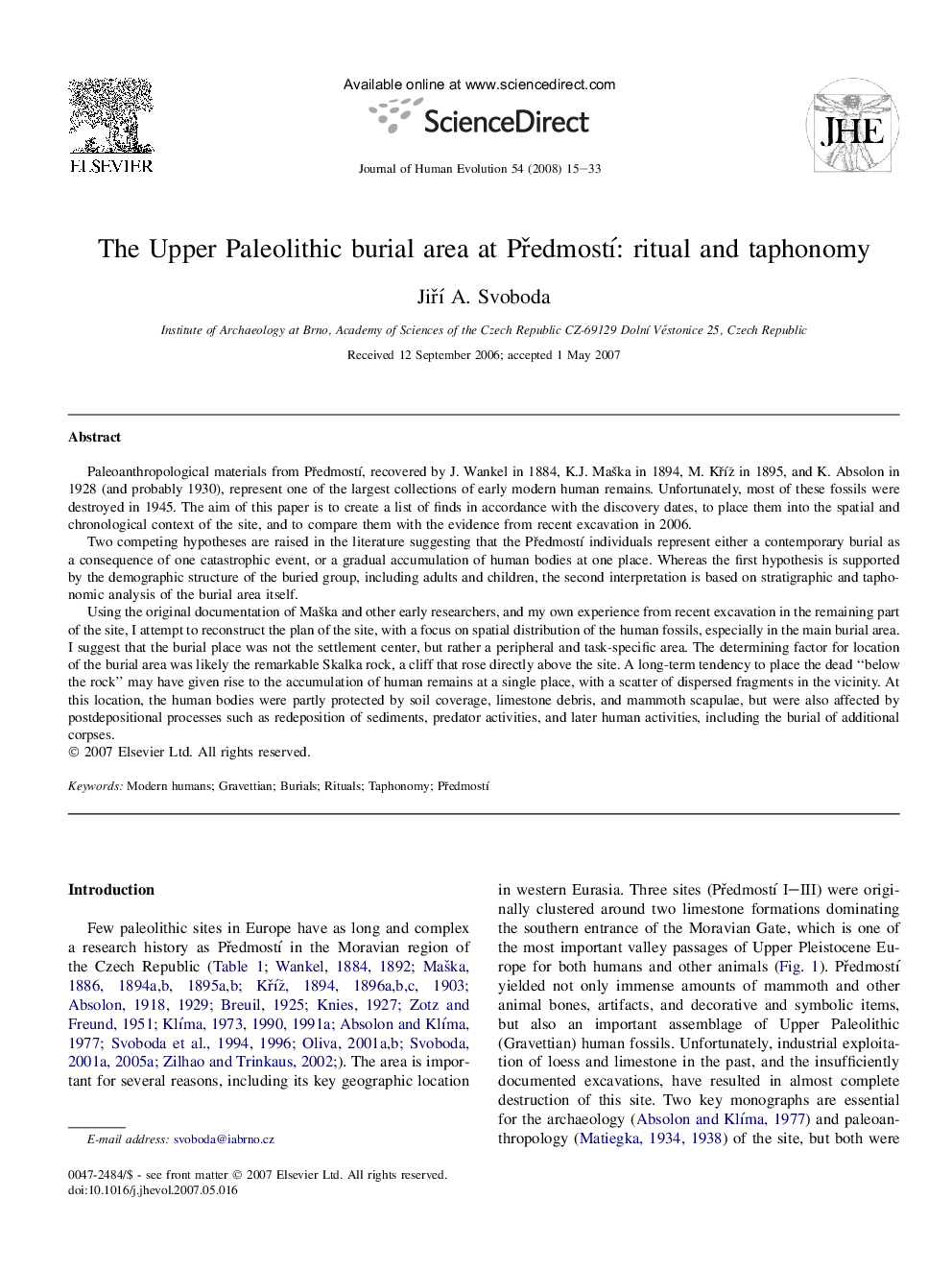| کد مقاله | کد نشریه | سال انتشار | مقاله انگلیسی | نسخه تمام متن |
|---|---|---|---|---|
| 4557139 | 1329529 | 2008 | 19 صفحه PDF | دانلود رایگان |

Paleoanthropological materials from Předmostí, recovered by J. Wankel in 1884, K.J. Maška in 1894, M. Kříž in 1895, and K. Absolon in 1928 (and probably 1930), represent one of the largest collections of early modern human remains. Unfortunately, most of these fossils were destroyed in 1945. The aim of this paper is to create a list of finds in accordance with the discovery dates, to place them into the spatial and chronological context of the site, and to compare them with the evidence from recent excavation in 2006.Two competing hypotheses are raised in the literature suggesting that the Předmostí individuals represent either a contemporary burial as a consequence of one catastrophic event, or a gradual accumulation of human bodies at one place. Whereas the first hypothesis is supported by the demographic structure of the buried group, including adults and children, the second interpretation is based on stratigraphic and taphonomic analysis of the burial area itself.Using the original documentation of Maška and other early researchers, and my own experience from recent excavation in the remaining part of the site, I attempt to reconstruct the plan of the site, with a focus on spatial distribution of the human fossils, especially in the main burial area. I suggest that the burial place was not the settlement center, but rather a peripheral and task-specific area. The determining factor for location of the burial area was likely the remarkable Skalka rock, a cliff that rose directly above the site. A long-term tendency to place the dead “below the rock” may have given rise to the accumulation of human remains at a single place, with a scatter of dispersed fragments in the vicinity. At this location, the human bodies were partly protected by soil coverage, limestone debris, and mammoth scapulae, but were also affected by postdepositional processes such as redeposition of sediments, predator activities, and later human activities, including the burial of additional corpses.
Journal: Journal of Human Evolution - Volume 54, Issue 1, January 2008, Pages 15–33